Resources
Anita Houck, Saint Mary’s College, enriches her teaching with skills she learned from Improv. She always addresses students’ questions with a “Yes” before nudging them beyond their scope of inquiry. She is a humorist who meets students where they are and, then, tickles them into a deeper sense of the subject and, perhaps, themselves. She is a recipient of the institution’s prestigious Maria Pieta Award for Excellence in Teaching in 2004 and the College Theology Society's Monika Hellwig Award for Teaching Excellence in 2017.This podcast was taken from the video series, "The “I” That Teaches," a project that invites senior scholars to talk about their teaching lives. These scholar-teachers candidly discuss how religious, educational, and family backgrounds inform their vocational commitments and, also, characterize their teaching persona. From the vantage point of a practiced teaching philosophy we get an intimate account of the value and art of teaching well.
Wabash Center Virtual Events at the 2020 Virtual AAR & SBL Annual Meetings Wabash Center Virtual Session #1 - Monday, November 30, 4:00 PM- 5:30 PM “After Whiteness: An Education in Belonging” A 90 minute online conversation with Dr. Willie James Jennings, moderated by Dr. Nancy Lynne Westfield, with Dr. Craig Barnes, Dr. Daisy L. Machado, Dr. Kwok Pui Lan, and Dr. Shawn Copeland. The conversation will consider the implications of Dr. Jennings' bookAfter Whiteness: An Education in Belongingfor teaching and learning in North American college, university, and theological school contexts. The session will begin and end with comments by the author, Dr. Jennings, about his book and its implications for pedagogy in the 21st century. The bulk of the session will involve a conversation among peers, moderated by Dr. Nancy Lynne Westfield, about how the book raises specific questions about contemporary higher education practice and the implications of these questions for the future of higher education, particularly as it relates to theological education. In the book, Dr. Jennings asserts, “Theological education has always been about formation: first of people, then of communities, then of the world. If we continue to promote whiteness and its related ideas of masculinity and individualism in our educational work, it will remain diseased and thwart our efforts to heal the church and the world. But if theological education aims to form people who can gather others together through border-crossing pluralism and God-drenched communion, we can begin to cultivate the radical belonging that is at the heart of God’s transformative work.” (Eerdmans.com) Wabash Center Virtual Session #2 - Monday, December 7, 4:00 PM - 5:30 PM “Pedagogies of Justice and Care in Liminal Times” A 90-minute session for early career faculty teaching in a range of higher educational contexts. Early career faculty courses are often expected to adhere stringently to disciplinary canons and institutional ethos norms regardless of world events, national happenings, or social movements. At the same time, early career faculty are often expected to be the nimblest, most adept, most technologically savvy, and most able to adjust to complicated teaching tasks, yet they rarely have more than a little experience with teaching in higher education. In addition, they often find an abundance of expectations related to peer responsibilities like advising, mentoring, teaching, service to the institution through committees, and scholarship.Teaching during uncertain times can make teaching more difficult, even overwhelming. Justice and care for students and faculty in liminal times is often in short supply and finding practices and strategies of incorporating real time goings-on can be daunting. This session will attend to a range of topics and questions related to pedagogies of justice and care for the early career colleague. Presider: Dr. Nancy Lynne Westfield, The Wabash Center for Teaching and Learning in Theology and Religion Panelists: Dr. Shehnaz Haqqani, Mercer University - Macon Dr. Christine Hong, Columbia Theological Seminary Dr. Sara Ronis, St. Mary’s University, Texas Dr. Ben Sanders, Eden Theological Seminary Dr. Lisa Thompson, Vanderbilt University Divinity School Panelists will respond to such questions and topics as: What’s the alternative in social upheaval to pretending all is the same? What pedagogies of care might be employed in contested spaces and liminal times? How does one attend to student resistance and fear when engaging justice concerns and topics? What strategies of listening can support teaching during upheaval within or beyond the institutional context? How does one prepare one’s self to teach while the world is shifting? What does it mean for an early career scholar to read the institutional politics when the institution is, itself, in crisis? What is the role of educational imagination and design when creating syllabi in uncertain times? Registration for these programs is through the AAR & SBL Meetings Registration Website. Non-Member Registration. Member Cost: $200 Non-Member Cost: $385 AAR Virtual Meetings Website SBL Virtual Meetings Website

In the early sixties, our three-generational family lived in a tight-knit African American community in north Philly. Van Pelt Street, just off of Diamond Street, was a long city block of home owners who knew each other, looked out for each other, and cared for all the families on the block. Both sides of the street consisted of row houses – meaning all the houses connected together. This version of architecture in NYC is called brownstone, but since Philadelphia houses were made of brick, they were called rowhomes. The entrance to the homes were marble stairs with stoops just outside of each door. Neighbors would sit on their stoops like country folk sit on their front porches. Sitting on the stoop was a daily activity for almost every household. As children, my brother and I, once we knew not to run into the street, were free to wonder up and down the street playing and visiting neighbors on their stoops. Visiting neighbors, while never being out of my parents’ or grandparents’ watchful eye, gave us a sense of interdependence and community. My parents knew that the farther from home we wondered, the more loving eyes watched us, watched over us and kept us safe. One of our favorite neighbors was Mr. Joe. Mr. Joe had salt and pepper, closely cut hair and smelled of motor oil. His hands were large and rough and his voice was warm and round. I can’t remember a time Mr. Joe did not smile when he saw me. Mr. Joe wore blue coveralls, and in the pocket of his coveralls, we soon learned, was candy. Mr. Joe would come home from work, go inside, then in short order, return to sit on his stoop. When my brother and I saw Mr. Joe on his stoop, we would go for a visit. Mr. Joe never disappointed – he was always glad for our visits and always offered us candy. If my brother was offered a piece of candy while I was not with him, he would say to Mr. Joe, “Can I have one for my sister?” And, Mr. Joe would say of course, reach back into his pocket and give my brother a second piece of candy. Brent would run home and give me my piece candy. If I was visiting Mr. Joe without Brent, and Mr. Joe gave me a piece of candy, I would simply say, “Thank you” to Mr. Joe, then run home and give my brother my piece of candy. Brent, seeing I only had one piece, would ask, “Why didn’t you ask for one for me?” My brother and I soon learned I was too shy to ask, too shy to say anything other than “thank you” even to beloved neighbor Mr. Joe. As a child, I was unable to voice what I needed. Sometimes saying what you need seems intimidating and scary. By the way, Brent never took my one piece of candy for himself. Years later, I was in a conversation with my Dean. The Dean had just taken the administrative post a few months before, and had scheduled conversations with each faculty person. The conversations were to get acquainted and to talk about curriculum participation. At my appointment, the Dean and I were having a congenial conversation. Then, his last question stumped me. The Dean asked me, “What do you need?” The question halted me. My hesitation was as much due to the way he asked the question, as the question itself. The Dean asked the question as if he intended to act upon my answer. Feeling the sincerity of the question gave it more gravity. In the moment, I felt disappointed that I had no real answer. This was not like the moment with Mr. Joe when I was too shy to say what I needed. By the time I sat with the dean, I was a well-voiced scholar. The question posed by the dean revealed that I had not done sufficient reflection or imagination work to rise to the level of his inquiry. Indeed, what do I need to teach well, better, or differently? The question was not a question of supplies. The Dean was not asking if I needed ink pens or a new desk chair. And, he was not asking about such things as Maslow’s hierarchy of needs, nor was he making an inquiry about the existential nature of my being. The Dean was asking me - what do you need in order to improve your teaching? What do you need to further immerse yourself in your own pedagogical project? What support do you need to engage the issues of your work? What can our intellectual community do to support your teaching agendas, practices, habits, or experiments? In this moment, I realized I had been so busy doing my project, I had taken little time to imaginatively reflect upon the doing of my project. I did not know what I needed and, in that moment, I could not say what I needed. Knowing what you need takes meditation, contemplation, inquiry, investigation, consideration, creativity and maybe -- conversations with friends that may involve drinking brown liquor, eating fatty foods and dancing. At the risk of stating the obvious, change is here to stay. In this moment, to engage the question “what do you need?” requires a more than cursory understanding of the context our work inhabits. The changes wrought in higher education, in general, and in our classrooms, specifically, are many and large. This season of COVID 19 quarantine, the Black Lives Matter movement, the extraordinary dilemma of government leadership, the shifting weather patterns, the US and global economic volatility, and global transformations are here to stay and have critical bearing upon our teaching lives. Even the notion of change being here to stay does not mean we are now static – in any way. The changes themselves are still changing. This dynamism, shifting, twisting and uncertainty is the new normal. We are surrounded personally, corporately, and nationally by grief, loss, and uncertainty. Our classrooms, our students, our selves have changed and will continue to change. We cannot be too shy or voiceless in engaging the question of need, and we cannot be unprepared or lacking critical reflection and imagination to answer this question with depth, guts and heart. Brothers and sisters, what do you need in order to teach - right now? In the midst of this ever-deepening flux, what would it mean to create space for conversation which can hold liminality and certainty as creative tension so that the emerging educational paradigms our society spawns now, and into the future, is nurtured? The Wabash Center has been working toward creating space so that colleagues can reflect and plan for what is needed in the right-now and the soon-to-be. Here is some of our work product: Launch of the Digital Salons in September. The six Digital Salons, bringing 95 colleagues into conversation to talk about what is needed. Improving The Wabash Center Journal on Teaching Creating online symposiums to be in conversation with major artists Webinars dedicated to antiracist practices Podcasts with more than 5,000 downloads Partnership with the Collegeville Institute about creative writing for scholars who want to speak into the public square Our staff is doing our own training in cultural competency Searching for new associate director Expanded online resource pages and materials created Three new blog series were created: Teaching for Social Justice and Civic Engagement; Teaching and Learning During Crisis; Director’s blog series “Teaching on the Pulse.” and more to be announced soon… It took me a couple months, but I did answer my Dean’s inquiry about my needs. The answer I gave him was thoughtful, generative, and, suggested my need for a new trajectory in my teaching project. Strengthening the ecology of our schools likely means providing one another with what is needed.
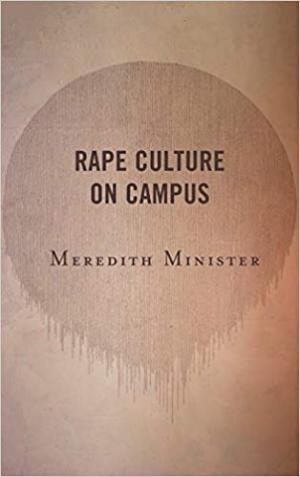
Rape Culture on Campus explores how existing responses to sexual violence on college and university campuses fail to address religious and cultural dynamics that make rape appear normal, dynamics imbedded in social expectations around race, class, gender, sexuality, and disability. Rather than dealing with these complex dynamics, responses to sexual violence on college campuses focus on implementing changes in one-time workshops. As an alternative to quick solutions, this book argues that long-term classroom interventions are necessary in order to understand religious and cultural complexities and effectively respond to this crisis. Written for educators, administrators, activists, and students, Rape Culture on Campus provides an accessible cultural studies approach to rape culture that complements existing social science approaches, an intersectional and interdisciplinary analysis of rape culture, and offers practical, classroom-based interventions. (From the Publisher)

On April 10-11, 2015 the University of San Francisco hosted the national conference, “Islam at U.S. Jesuit Colleges and Universities.” The overall aim of the conference was to examine the evolution of the mission, objectives, and identity of Catholic Jesuit colleges and universities in light of the expansion of the study of Islam and the growing presence of Muslim faculty, staff, and students on our campuses. (From the Publisher)
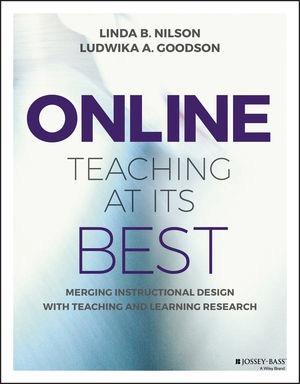
Online Teaching at Its Best: A Merger of Instructional Design with Teaching and Learning Research is the scholarly resource for online learning that faculty, instructional designers, and administrators have long been awaiting. Over 70 percent of degree-granting institutions offer online classes, and while technical resources abound, the courses often fall short of integrating the best practices in online pedagogy, even if they comply with online course design standards. Typically these standards omit the best practices in teaching and learning and the principles from cognitive science, leaving students struggling to keep the pace, understand the material, and fulfill their true potential as learners. This book fills the gap, providing evidence-based practices for online teaching, online course design, and online student motivation integrated with pedagogical and cognitive science to help you build the distance learning courses and programs your students deserve. As more and more students opt for distance learning, it's up to designers and instructors to rethink traditional methods and learn to work more effectively within the online learning environment, and up to administrators to provide the needed leadership. Online Teaching at Its Best provides practical, real-world advice grounded in educational science to help online instructors, instructional designers, and administrators deliver an exceptional learning experience. (From the Publisher)
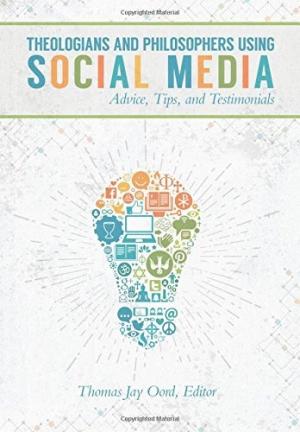
The insights in these 90+ essays are nothing short of inspiring! Their tips on best practices for social engagement, time management, social media as a resource for scholarship or creativity, technology and pedagogy, etc. will help readers tremendously. The contributors are diverse. They include.... - Public theologians like Ben Corey, Brian McLaren, and Richard Rohr - Younger scholars like Tripp Fuller, Jory Micah, and Alexis Waggoner - Biblical scholars like Michael Gorman, Joel Green, and Daniel Kirk - Philosophers like Helen De Cruz, Aaron Simmons, and Kevin Timpe - Establish scholars like James Crossley, Kwok Pui-lan, and Amos Yong - Scholars outside North America like Deane Galbraith, RT Mullins, Hanna Reichel, and Atle Sovik - Pastoral theologians like Patricia Farmer, Len Sweet, and Kurt Willems - Historical theologians like Kim Alexander and Christine Helmer - Science and religion scholars like Ron Cole-Turner, Karl Giberson, Lea Schweitz, and Jim Stump - Constructive theologians like Oliver Crisp, Grace Ji-Sun Kim, and Jason Lepojärvi - Ethicists like Miguel De La Torre, David Gushee, and Michael Hardin ...and the list goes on! Whether the reader is an armchair theologian, a professional scholar, a graduate student, or simply interested in how social media is changing religious and philosophical studies, that reader will find Theologians and Philosophers Using Social Media of great help.
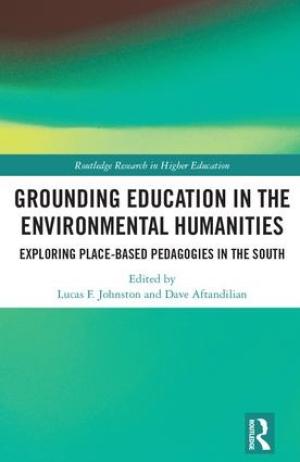
This edited volume draws together educators and scholars to engage with the difficulties and benefits of teaching place-based education in a distinctive culture-laden area in North America: the United States South. Despite problematic past visions of cultural homogeneity, the South has always been a culturally diverse region with many historical layers of inhabitation and migration, each with their own set of religious and secular relationships to the land. Through site-specific narratives, this volume offers a blueprint for new approaches to place-based pedagogy, with an emphasis on the intersection between religion and the environment. By offering broadly applicable examples of pedagogical methods and practices, this book confronts the need to develop more sustainable local communities to address globally significant challenges. (From the Publisher)
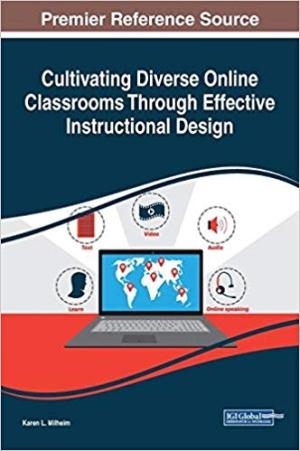
Higher education programs are continuously expanding globally and now, students who are enrolled in online courses can reside anywhere in the world. Due to this phenomenon, institutions are forced to adapt to serve their remote students. Cultivating Diverse Online Classrooms Through Effective Instructional Design provides emerging information on designing online courses recognizing cultural differences, building effective learning environments and forums, and integrating classroom aesthetics. While highlighting the challenges of online education and intercultural learning, readers will learn valuable ways to maximize student communication, learning, and other culturally diverse classroom tools. This publication is an important resource for instructional designers, graduate students, academics, and other higher education professionals seeking current research on the best ways to globally expand online higher education. (From the Publisher)
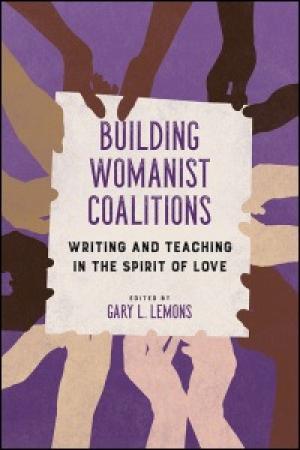
Over the last generation, the womanist idea—and the tradition blooming around it—has emerged as an important response to separatism, domination, and oppression. Gary L. Lemons gathers a diverse group of writers to discuss their scholarly and personal experiences with the womanist spirit of women of color feminisms. Feminist and womanist-identified educators, students, performers, and poets model the powerful ways that crossing borders of race, gender, class, sexuality, and nation-state affiliation(s) expands one's existence. At the same time, they bear witness to how the self-liberating theory and practice of women of color feminism changes one's life. Throughout, the essayists come together to promote an unwavering vein of activist comradeship capable of building political alliances dedicated to liberty and social justice. (From the Publisher)